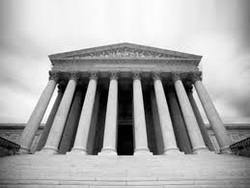
Once you meet someone it seems to become habit to stalk them on Facebook. Look at their likes, their favorite quotes, who they consider to be influential, what pictures they post up, and who their friends are. We try to learn as much as we can, and from there we create who they are; their identity.
Not just limited to Facebook. It seems that our generation has become a generation of profilers. And I, being just as guilty as everyone else, found that we as a society have become accustomed with creating representations of people, what they like and ultimately who they are.
I’m not talking about stereyotypes. No, it has become more complicated than that.With our phones glued to our hands, ear buds in our ears, iTouches streaming, we have become the generation of technology, entertainment, and judgement. What we read, what we listen to, what we see, seems to be a generation of representation. Profiles of society.
Esspecially seen in our celebritires and icons. The headlines we read, and the shows we watch highlight a label we have put on.
It seems to be a common fact that Justin Bieber is a wannabe-hipster that sings like a grils, Lebron James is the sports world’s most revered backstabber and Kim Kardashian is the most annoying human being on earth.
And girls, as trite as it may be, have been created to fit one body structure. Magazines and ads covers showcase models of what have become the perfect profile; what our generation sees as perfection. Tall, thin, glossy hair, the perfect face structure and a blinding smile. You may think that the issue has come a long and gone issue, but it highlights a growing trend in our generation. Since we spend most of our time online, we become susceptible to what we read and what we see. Without even realizing it, we keep track of the pictures and ads we pass over, and the identity society has put on idividuals to search for perfection.
And all of this seems to be fueled by social media.
If one person says it, twenty people “like it,” then we’re incline to think it.
According to The American Psychological Association, seven percent of an impression is based on what one says, 38 percent is based on how someone says it, and 55 percent is based on appearance.
However, it seems today another percentage should be added based on social media perception.
With almost 200 million tweets posted everyday and Facebook users spending an average of 15 hours per month in Facebook, it seems that social media plays a pivotal role in society, and most importantly in what we think. You might think I may be over analyzing, but take the Trayvon Martin case for example. The world went in an uproar as anger spread that a young boy was killed; and when the idea that racial profiling may have been at fault, the fire grew stronger. But just as fast as the news spread, George Zimmerman become the world’s most hated man. Now don’t get me wrong, I’m not defending Zimmerman in any form, but as a society it seemed that our mind was made.
Even as new developments expanded and evidence was released to the public, we come to the notion that we’ll never know what had happened, yet ultimately it doesn’t seem matter.
The Martin story took over Twitter in a pandemonium. With more than 100 tweets per minute, and #wewantjustice and #justicefortrayvonmartin becoming worldwide trends, society had made up their mind.
Zimmerman was officially profiled.
Maybe rightfully so, but it seems that we’ll never really know, especially without all of the facts.
As cliché as it may sound, the old saying don’t judge a book by its cover needs to be put in affect, and I suppose a little refined.
So I guess, don’t judge a book by it’s cover, a person by their Tweet and a status by it’s likes or else you’ll become an official newly-reformed, societal profiler.
Not just limited to Facebook. It seems that our generation has become a generation of profilers. And I, being just as guilty as everyone else, found that we as a society have become accustomed with creating representations of people, what they like and ultimately who they are.
I’m not talking about stereyotypes. No, it has become more complicated than that.With our phones glued to our hands, ear buds in our ears, iTouches streaming, we have become the generation of technology, entertainment, and judgement. What we read, what we listen to, what we see, seems to be a generation of representation. Profiles of society.
Esspecially seen in our celebritires and icons. The headlines we read, and the shows we watch highlight a label we have put on.
It seems to be a common fact that Justin Bieber is a wannabe-hipster that sings like a grils, Lebron James is the sports world’s most revered backstabber and Kim Kardashian is the most annoying human being on earth.
And girls, as trite as it may be, have been created to fit one body structure. Magazines and ads covers showcase models of what have become the perfect profile; what our generation sees as perfection. Tall, thin, glossy hair, the perfect face structure and a blinding smile. You may think that the issue has come a long and gone issue, but it highlights a growing trend in our generation. Since we spend most of our time online, we become susceptible to what we read and what we see. Without even realizing it, we keep track of the pictures and ads we pass over, and the identity society has put on idividuals to search for perfection.
And all of this seems to be fueled by social media.
If one person says it, twenty people “like it,” then we’re incline to think it.
According to The American Psychological Association, seven percent of an impression is based on what one says, 38 percent is based on how someone says it, and 55 percent is based on appearance.
However, it seems today another percentage should be added based on social media perception.
With almost 200 million tweets posted everyday and Facebook users spending an average of 15 hours per month in Facebook, it seems that social media plays a pivotal role in society, and most importantly in what we think. You might think I may be over analyzing, but take the Trayvon Martin case for example. The world went in an uproar as anger spread that a young boy was killed; and when the idea that racial profiling may have been at fault, the fire grew stronger. But just as fast as the news spread, George Zimmerman become the world’s most hated man. Now don’t get me wrong, I’m not defending Zimmerman in any form, but as a society it seemed that our mind was made.
Even as new developments expanded and evidence was released to the public, we come to the notion that we’ll never know what had happened, yet ultimately it doesn’t seem matter.
The Martin story took over Twitter in a pandemonium. With more than 100 tweets per minute, and #wewantjustice and #justicefortrayvonmartin becoming worldwide trends, society had made up their mind.
Zimmerman was officially profiled.
Maybe rightfully so, but it seems that we’ll never really know, especially without all of the facts.
As cliché as it may sound, the old saying don’t judge a book by its cover needs to be put in affect, and I suppose a little refined.
So I guess, don’t judge a book by it’s cover, a person by their Tweet and a status by it’s likes or else you’ll become an official newly-reformed, societal profiler.

 RSS Feed
RSS Feed